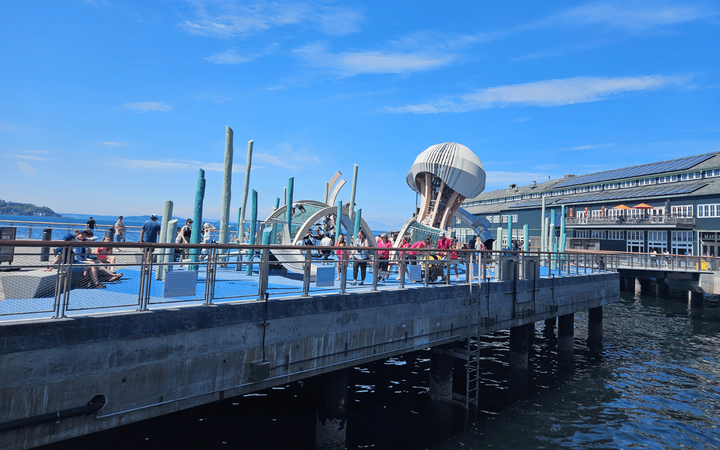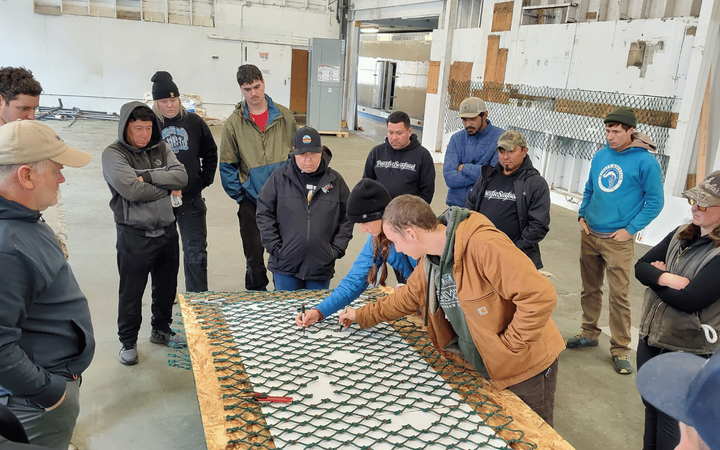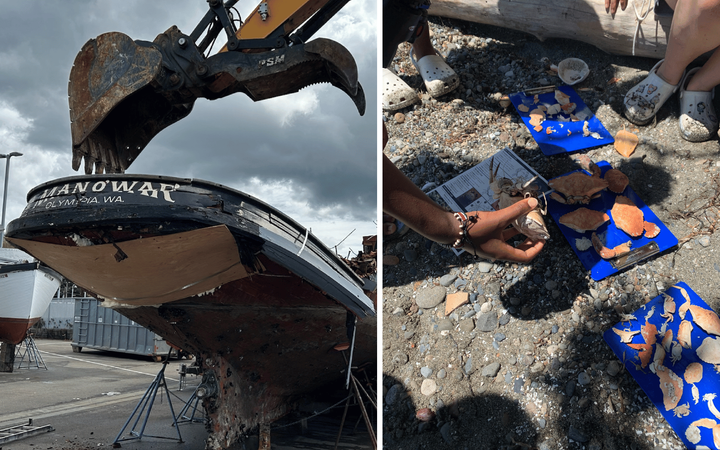Seattle’s Maritime High School hits milestone with first graduating class
The first of its kind in Washington state, MHS staff and industry partners also learned a lot over the past four years

Mara Mersai, 18, is different from a few years ago. She’s more comfortable talking with adults and more familiar with ship systems. She’s a teenager who likes watching National Geographic videos on Instagram and calling her friends, but with a different perspective than many high school seniors.
As a student in Maritime High School’s inaugural class, Mersai spent the past four years learning all about marine jobs and maritime employers through field work, interviews, and hearing from Seattle Maritime Academy (SMA) alumni.
Even though she’s interested in the water and its ecosystems, when the time came to choose between a marine operations or marine science pathway for her junior and senior years, Mersai chose operations. After graduating, she plans to find work on vessels in the engine department.
How to start a maritime high school
If you’re familiar with Raisbeck Aviation High School, located near Boeing Field, the idea of Seattle having a maritime-themed school might make sense. Washington state is an aviation hub, it’s also long been a maritime hub.
However, school funding is complex. Public school policy is complex. The maritime industry and its certifications are complex. For more than five years, a coalition of partners have navigated this complexity to create a new high school experience for Seattle-area students.
While other high schools in Ballard and Port Townsend have elective maritime programs, MHS is the first of its kind in Washington state.
Part of Highline Public School District, which extends from White Center in Seattle south to Des Moines, MHS graduated its first senior class in June. This inaugural class’ experience will truly be like no other.
About half of the 31 graduates plan to pursue maritime employment or continue their maritime education. The other half are looking at other post-secondary opportunities including four-year colleges, aviation, and other trades or careers.
The students are not the only ones figuring out what comes next. Their instructors, school staff, and key partners have spent the past four years learning what does, and doesn't work. They've adjusted the curriculum as they work to establish what it means to be “a MHS graduate.”
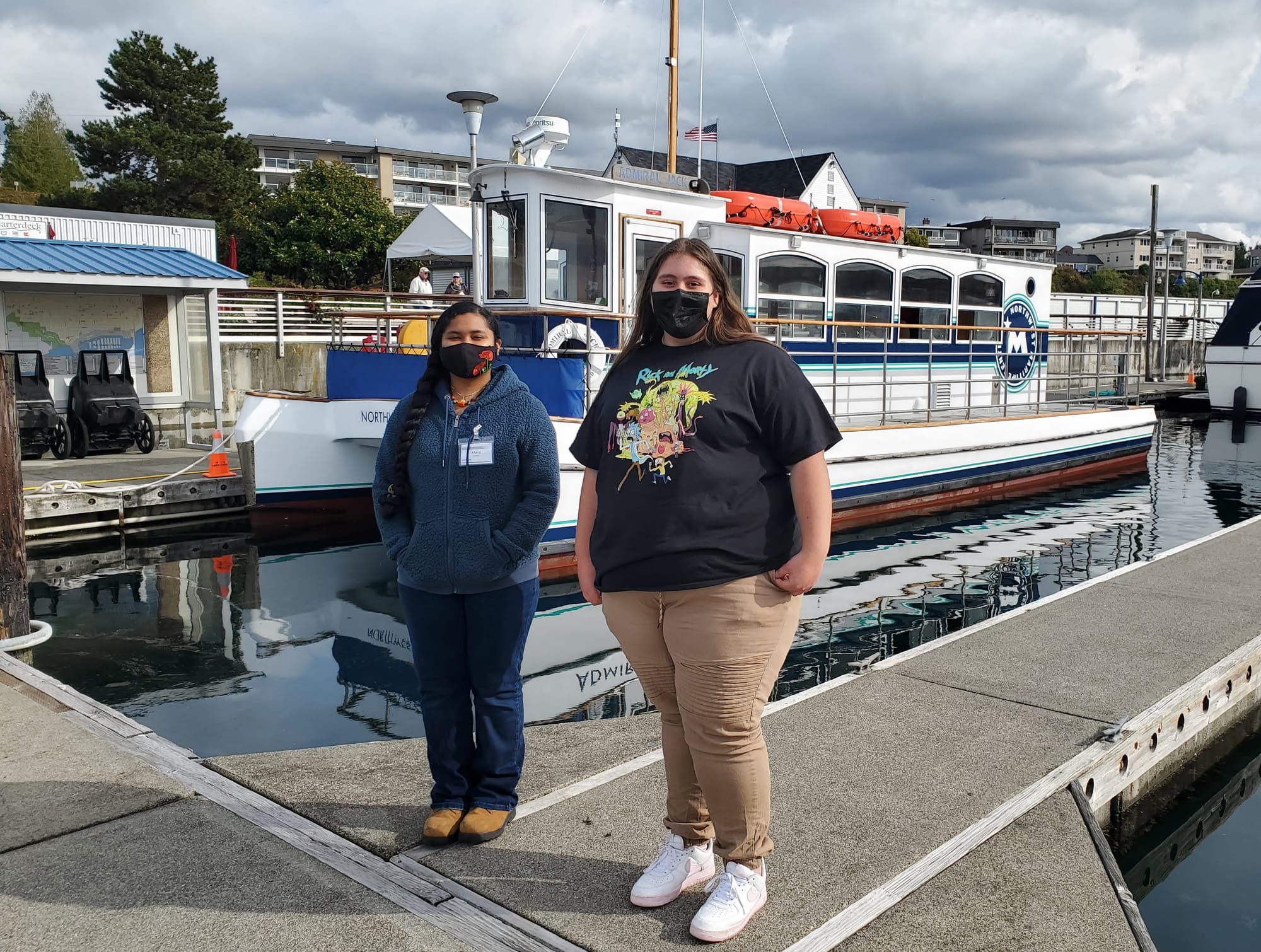
Mersai spoke to Future Tides as a freshman and as a junior. She knew early on that this high school experience would be different.
“It’s not like your usual way of doing school,” Mersai said in 2021. “They do more things outside than inside.”
Since then, some highlights for Mersai were a 4-day field trip on the Schooner Zodiac, and seeing a really large ship at the dry dock. She participated in some clubs, but said in the last two years, her schedule didn’t allow for many extracurriculars.
Speaking in May, only a few weeks and one major final project away from graduation, Mersai appeared comfortable fielding questions about the future. She expressed a much greater understanding of what “maritime” means than when she started.
“When I first thought of the maritime industry, I just thought, oh, like water…like the science of it…I wasn't really aware of the boats and the engineering and like how they travel. And so it really opened up.”
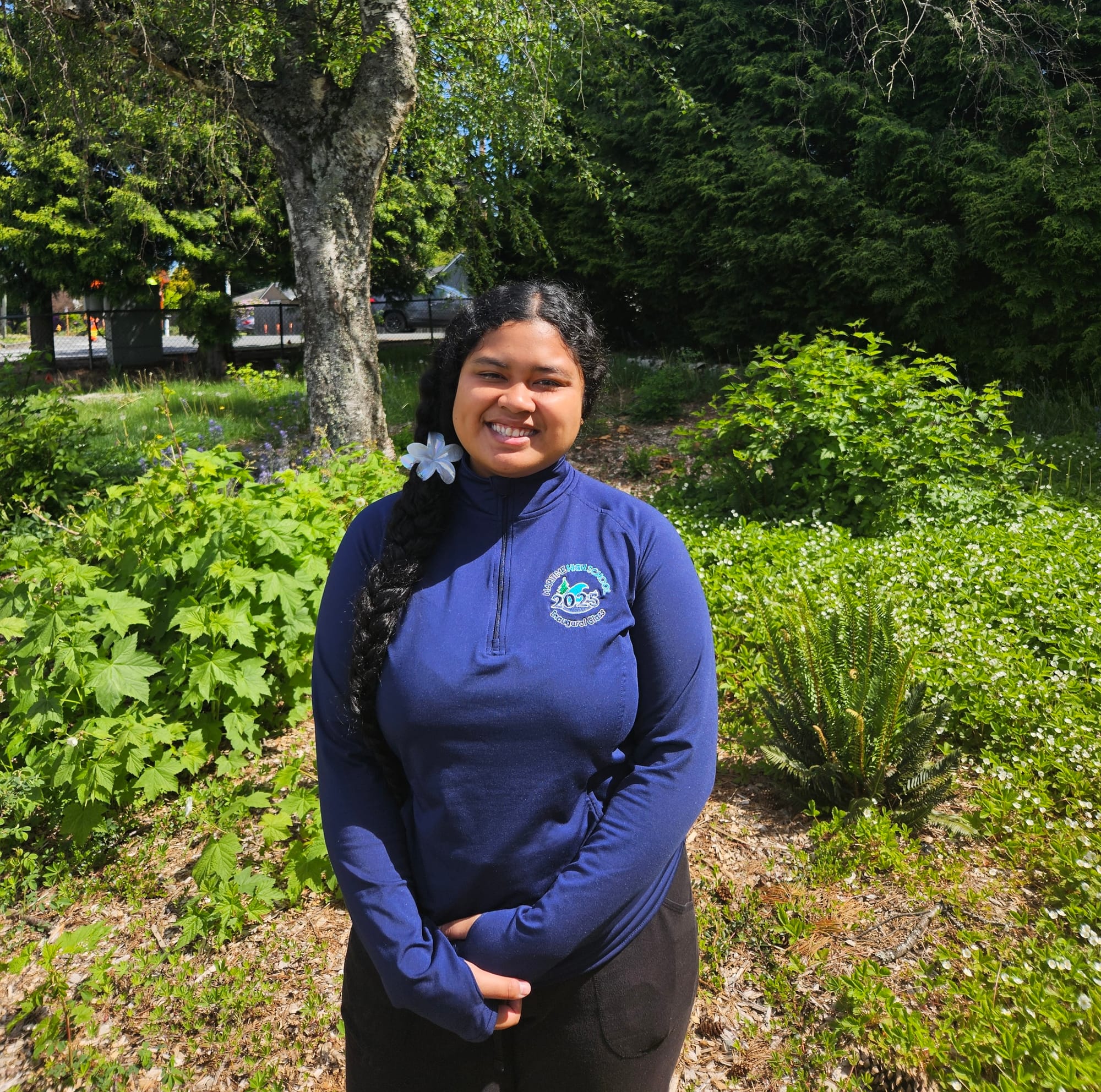
She's learned about how people on boats and on shore work together; how multiple companies work together, and that almost everyone in the industry knows each other. She learned that ship engineers keep the boats running, from pipes to engines and numerous other systems, and how to trace those systems.
“Spending time with friends was really fun, and also working on projects, learning about people, I guess the experience, the feeling of like, ‘Whoa, there's a whole new world!’ is something that I would miss for a bit,” she said. “And oh my gosh, I'm graduating!”
Explore and launch
Tyson Trudel is the maritime education manager at the Northwest Maritime Center, a Port Townsend-based nonprofit and key partner behind Maritime High School. Other core partners are Highline Public Schools, Port of Seattle and the Duwamish River Community Coalition.
Trudel said these partnerships bring resources such as funding and internship opportunities. They’ve also established other industry partnerships, like with Washington State Ferries. He works on helping shape the curriculum, which involves a two year “explore phase” followed by a two year “launch phase.”
In 9th and 10th grade, students are exposed to the “broad spectrum of maritime” and what the industry does. Students also cover more standard high school curriculum, but with a maritime twist.
“Where that stuff shows up in maritime. So it's like, where does biology show up in maritime? Where does physics show up in maritime? Where does geometry show up in maritime?” Trudel explained.
Students are also mentored by professionals in the maritime industry, and encouraged to develop soft skills like networking.
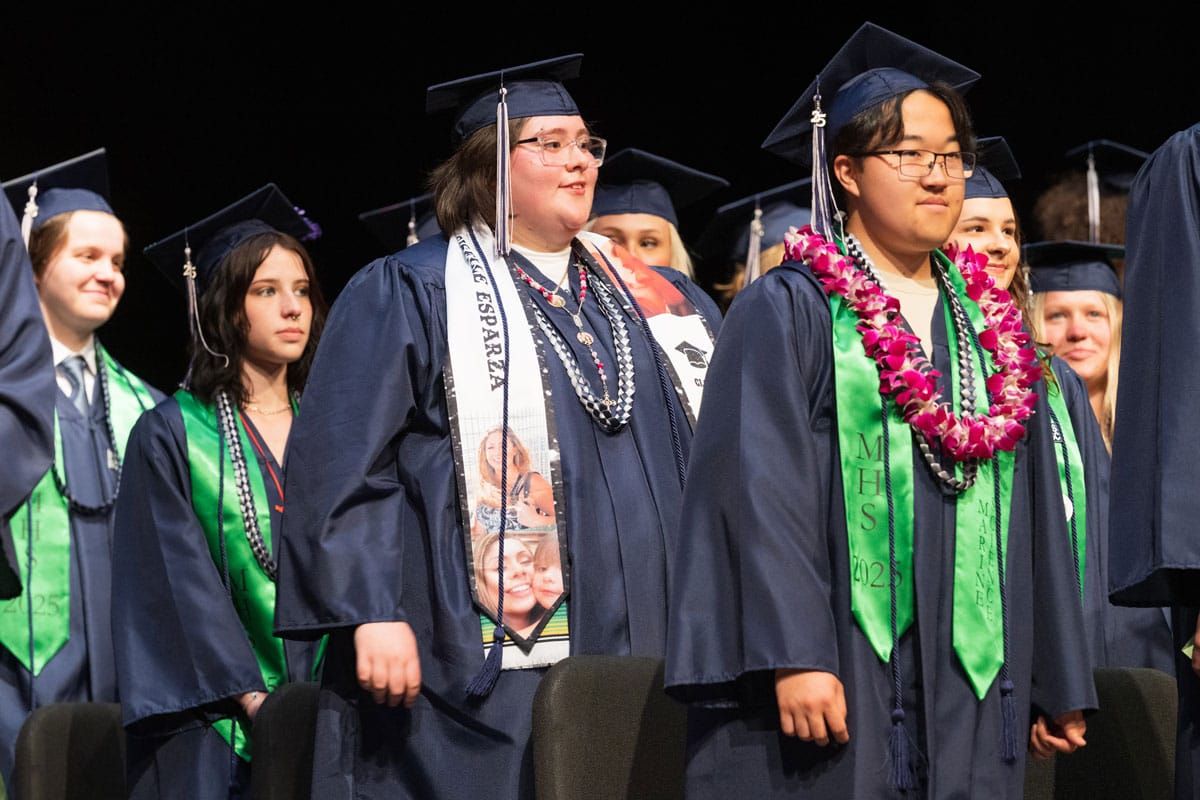
Since the industry is so broad, they’ve broken it out into three chunks: vessel operations, marine construction, and marine science. Like with Running Start, the 11th and 12th grade students attend college-level classes.
Marine construction is the newest pathway, with students participating in South Seattle College’s welding program. The marine science students go to Highline College, and the vessel operations/engineering students head over to Seattle Maritime Academy in Ballard.
Accessing existing programs at these community colleges allowed the MHS staff to quickly stand up the launch phase. After all, they had to keep up with the inaugural class.
‘Pioneering a route for other students’
The marine operations/engineering pathway Mersai chose accelerated her ability to become a Qualified Member of the Engine Department, or get a QMED rating. It includes academic coursework, plus a 90-day at sea internship following graduation.
“We worked with SMA to make a version of their program that fit the schedule for our students. They took their 12-month program and spread it out over two, nine month school years,” Trudel said. “And the short version is, it's awkward.”
In addition to the added logistics of transporting students to Ballard, he said they’re assessing what will make this pathway sustainable long term, and if it’s delivering the best outcome for students.
“Yes, we're doing it. We figured out how to do it, but is it getting the results for students that we hope?” he said.
“This very, very small group, ultimately, are kind of pioneering a route for other students.”
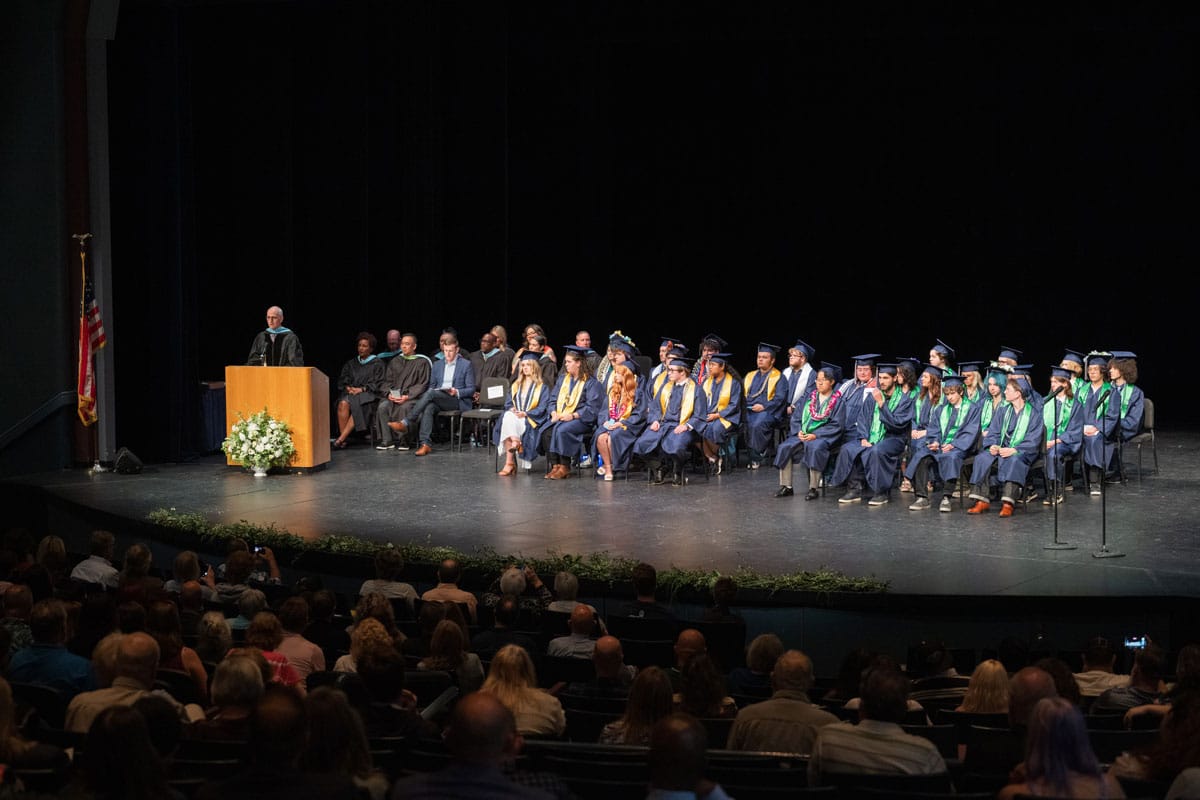
Trudel said working with the students hasn’t been challenging. Navigating the credentialing system proved the most challenging. The required drug tests and physicals created complications, especially with minors.
Mersai said being the “test subjects” was tiring but that now the school is more prepared for incoming freshmen. Her experience included some trial and error, sometimes wondering what might happen next.
“Oh, this is what you're gonna do…’ then, like, ‘hey, let's do this. Oh, that's not gonna work. Nevermind. Let's do this instead,’” she said.
Trudel came on board after some of the initial planning, but before the first class started. He’s had to take others' big, innovative ideas, and figure out how to actually make it work.
“It's had a lot of startup energy,” he said.
The Seattle Propeller Club, which promotes maritime commerce, recognized Trudel this year for that energy and his efforts with their “ Maritime Educator of the Year” award.
Responding to the industry
At a career fair in January, a smattering of students moved from booth to booth inside a school gym. In the lobby, eye-catching survival suits (aka "Gumby" suits) lay on the floor prepped for the next group. A small robotic submersible floated in a tank outside, ready for a demo dive.
The employers who attended are clearly invested in the pipeline MHS is becoming part of, though their motivations differ. Some training programs, like SMA or Maritime Institute, are seeking a boost in recruitment and to raise awareness about the work opportunities.
Other companies are eager for a new generation of skilled workers, or to recruit for their own training programs. Retention is a concern too.
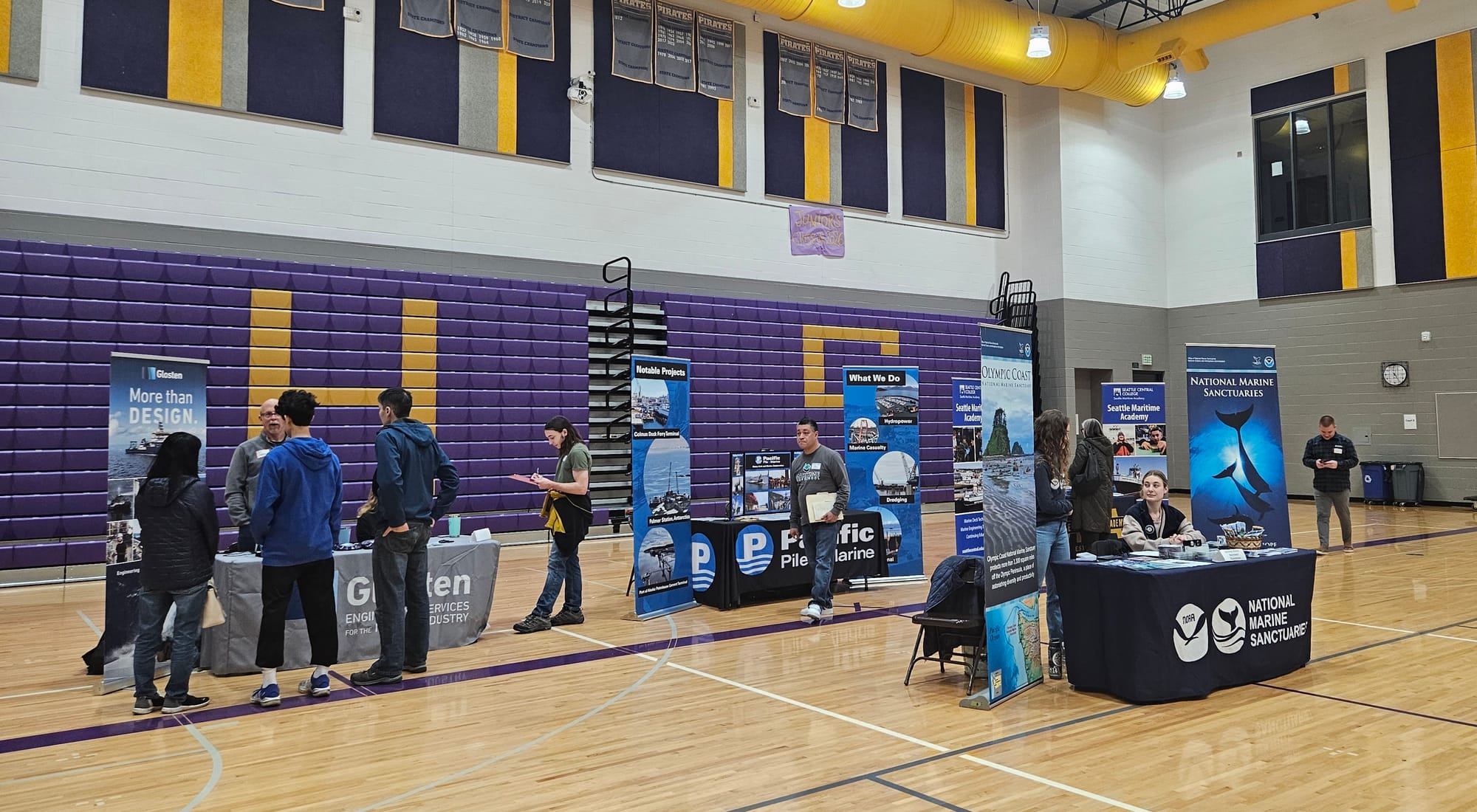
Also in the room: Washington State Ferries, NOAA, marine general contractor Pacific Pile & Marine, ship repair yard Stabbert Marine, commercial diving companies, a few environmental groups, and Holland America cruise line.
When Mersai started at MHS, she wasn’t familiar with the industry, her only connection being a relative who works on tugboats in Palau. Now, she feels like she has a good grasp of it.
“It's like a network of people knowing about boats, knowing about this, and then sharing that knowledge between each other, and also how that all kind of connects in a way,” she explained.
She's ready to continue connecting with that network.
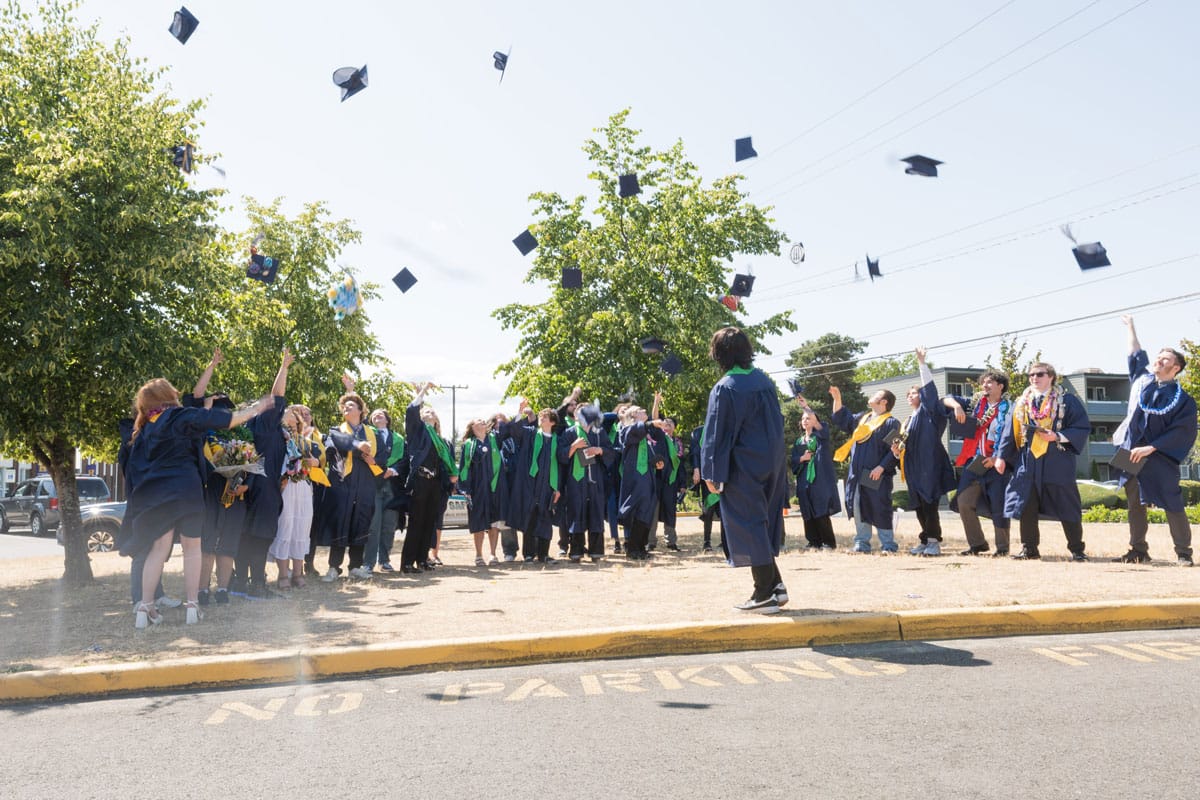
The next tack
The first 31 students may have departed, but Trudel, along with approximately 16 MHS staff and their various partners, remain busy helping the new school build its foundation.
Trudel said they are working towards transitioning away from the community college programs to create “career and tech ed” or CTE programs that teach both academic and technical skills for each pathway.
The partners are also still working towards a dedicated campus. MHS is currently located at Highline Schools’ interim school site where classes will resume September 3.
Trudel said the ideal location would be on the water, but that makes it exponentially more difficult. About 50% of MHS students come from outside the Highline School District, with some commuting from South Sound and Kitsap County. Plus, when it comes to funding or new construction, he said it’s even harder as a new school.
Each grade has 30-35 students, with 123 total students enrolled in the 2024-2025 school year. MHS originally set a target of 100-student classes, and a goal of reaching 400 students by 2025. However, Trudel is excited that they’ve identified a functional model, secured basic education funding, and found some stability.
“What we're looking forward to is building on that and growing the size of the classes, and then really getting – for the students who want it – really getting that transition from high school to maritime-focused post-secondary education…and then maritime employment,” Trudel said.
He added that for kids who want to work right out of high school, the goal is to not just provide them a smooth transition to employment, but to put them on the path of a family-wage job. The Northwest Maritime Center reported that graduates entering the workforce could earn $60,000 to $80,000 a year.
Mersai, the recent graduate, said she would recommend MHS for students who are willing or planning to work in the maritime industry.
“Because some of the students here came here, and some of them actually don't want to work in this industry,” she said.
Mersai is among the students who are seeking employment soon after school. Since her freshman year, she’s heard about how the industry needs more workers, and that many people are retiring.
“I think this is a good opportunity to start learning. And you know, if you want to do this type of career, then go ahead. It is a lot of work, but a lot of the learning comes from experience and networking,” she said.
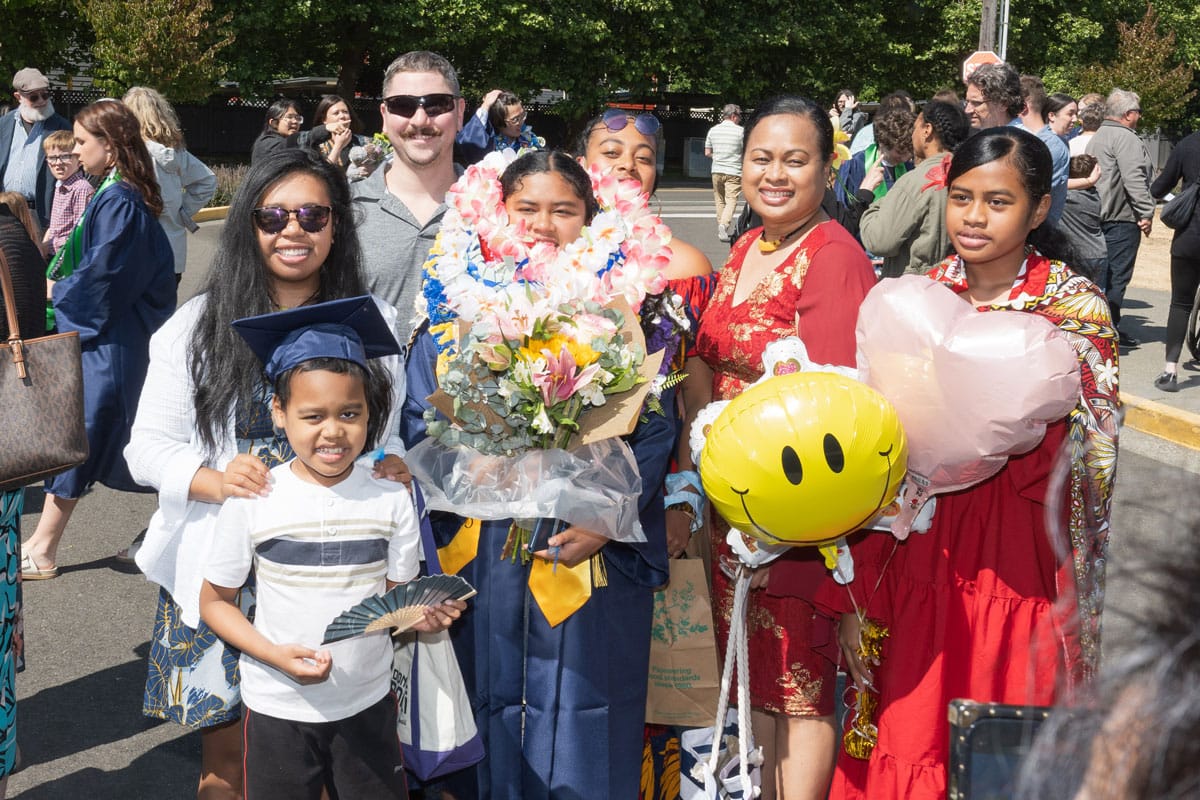
As a freshman, she expressed a desire to work onboard a boat, alongside her enthusiasm for the aquaponics lab. That’s now very much on the horizon.
“I want to go and work on larger vessels, maybe travel,” Mersai said. She’s inspired by marine professionals she interviewed who work abroad and do a lot of traveling.
Mersai said she still might pursue marine biology or other secondary education, and that working on ships might help pay for that.
“I don't want to go to college to study for something and…realizing I actually don't want to do this, and then figure out how to change from this to there.”
In the meantime, she can keep the ship running, discover other "new worlds" — and keep an eye out for wildlife on, and off, Instagram.
📝 Prospective students can apply to Maritime High School online.
⛴️ Maritime industry professionals can get involved with outreach, mentorship, field work, and more.

